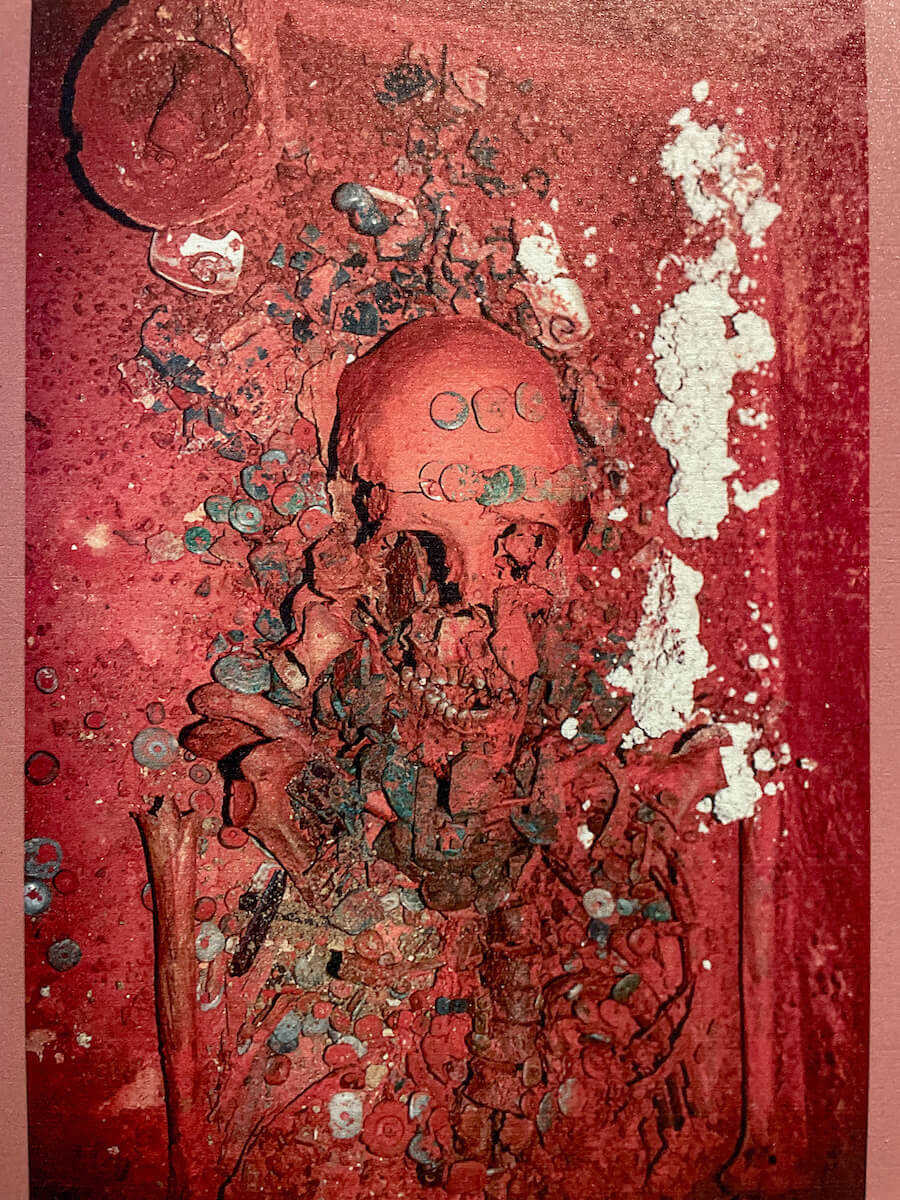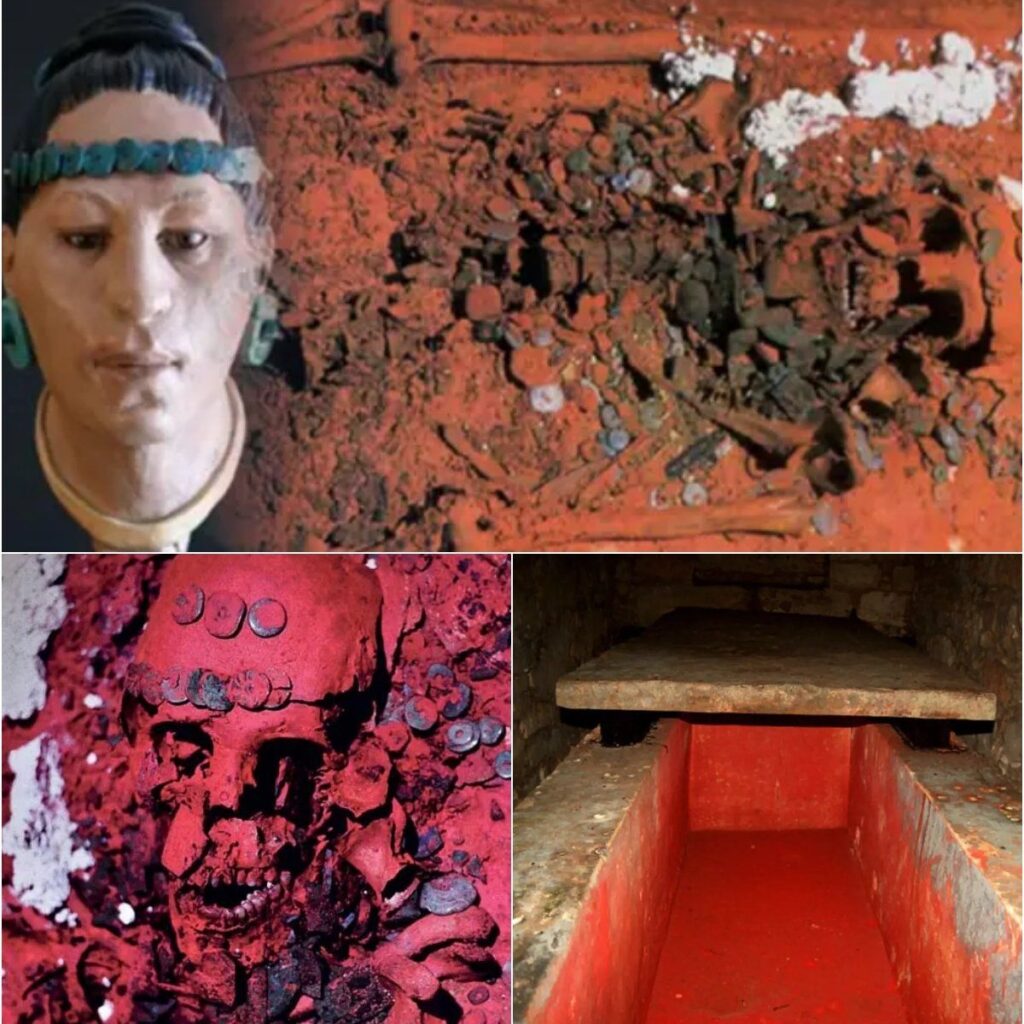Nestled amidst the lush jungles of Mexico’s Chiapas region lies the ancient Maya city of Palenque, a UNESCO World Heritage site that has captivated archaeologists and historians for decades. Within the sprawling ruins, one tomb stands out as a particularly intriguing mystery – the resting place of the enigmatic “Red Queen.” Surrounded by a treasure trove of artifacts and shrouded in a crimson veil of cinnabar dust, this noblewoman’s identity has long eluded researchers, sparking a decades-long quest to unravel the secrets of her life and death.
In this blog post, we’ll delve into the fascinating story of the Red Queen, exploring the remarkable discoveries made within her tomb and the ongoing efforts to piece together the puzzle of her identity and significance within the ancient Maya civilization.
The Secrets of Palenque

Palenque’s heyday was the seventh century A.D., when it flourished under the rule of the renowned King Pakal the Great. During this golden age, the city transformed into a powerful Maya capital, boasting impressive palaces, administrative buildings, and temples adorned with intricate bas-relief sculptures. At the heart of this ancient metropolis lay the Temple of the Inscriptions, a 90-foot-high pyramid that concealed a remarkable discovery – the well-preserved tomb of King Pakal himself.
The discovery of Pakal’s tomb in 1952 was a groundbreaking event, shedding light on the sophisticated funeral practices and beliefs of the ancient Maya. However, the secrets of Palenque did not end there. In the years that followed, archaeologists continued to uncover new and intriguing finds within the city’s ruins, each one providing a tantalizing glimpse into the lives and customs of the Maya people.
The Red Queen’s Tomb

In 1994, the archaeological director of Palenque, Arnoldo González Cruz, decided to explore another structure adjacent to the Temple of the Inscriptions, known as Temple XIII. Excavations revealed a hidden corridor leading to a sealed, vaulted chamber, sparking the team’s curiosity. Upon carefully removing the stones blocking the passage, the archaeologists were greeted by a grisly sight: two sacrificed individuals, an adolescent male and an adult female, lay outside a monolithic limestone sarcophagus.
The sarcophagus itself was an awe-inspiring sight, covered in a thick layer of scarlet powder later confirmed to be cinnabar, a highly toxic mercuric sulfide. Cautiously lifting the heavy lid, the researchers were confronted with an even more stunning discovery: the interior of the tomb, including the remains and accompanying grave goods, were all coated in the same vibrant crimson hue. The identity of the tomb’s occupant, now known as the “Red Queen,” remained a mystery, yet her regal status was undeniable.
Unveiling the Crimson Mystery

The discovery of the Red Queen’s tomb was a watershed moment in the study of Palenque’s history. The sheer opulence and attention to detail within the tomb suggested that its occupant held a position of immense power and influence within the ancient Maya society. The use of cinnabar, a rare and highly prized pigment, further underscored the individual’s elite status and the importance of their burial.
Extensive studies of the Red Queen’s remains and artifacts have provided valuable clues about her identity and status within Palenque’s elite. Analysis of her teeth and facial reconstruction suggest she was a local woman, likely a contemporary of King Pakal. The wealth of her grave goods, including a magnificent malachite funerary mask, further reinforces her high-ranking position within Maya society.
Piecing Together the Puzzle
While the exact identity of the Red Queen remains elusive, the evidence points to the possibility that she was Pakal’s wife, Ix Tz’akb’u Ajaw, who came to Palenque from a nearby city to marry the great king. This theory is supported by the proximity of her tomb to that of Pakal, as well as the similarities in their burial practices and the high-status artifacts found within both tombs.
Researchers have also explored other potential identities for the Red Queen, such as a powerful priestess or a member of the royal family. However, the evidence continues to suggest a close connection between the Red Queen and King Pakal, leading many to believe that she was indeed his wife and a significant figure in her own right within the ancient Maya civilization.
Conclusion
The discovery of the Red Queen’s tomb has captivated the imagination of archaeologists and the public alike, sparking a ongoing quest to unravel the mysteries surrounding this enigmatic figure. As researchers continue to study the wealth of artifacts and evidence found within the tomb, the hope remains that the Red Queen’s true identity will one day be definitively established, shedding light on the complex social and political dynamics of the ancient Maya civilization.
The Red Queen’s tomb stands as a testament to the enduring allure of Palenque’s secrets, a testament to the wealth of knowledge still waiting to be uncovered within the lush jungles of Mexico. Through the ongoing efforts of dedicated researchers, the story of the Red Queen continues to unfold, revealing the rich tapestry of Maya culture and the enduring legacy of this remarkable civilization.
Perspective through video
